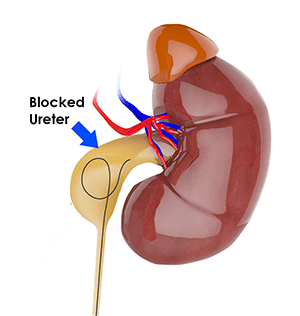
What is Pyeloplasty?
Pyeloplasty is a surgery to repair an abnormal narrowing of the drainage system of the kidney. Normally the urine produced by the kidney is collected into the renal pelvis, which then drains smoothly in the ureter. The ureter passes the urine to the bladder. A uretero-pelvic junction (UPJ) obstruction is an abnormality in which the connection between the renal pelvis and the ureter is either too narrow, or compressed by an abnormal blood vessels.
UPJ obstructions can occur at birth, or develop over time. If the obstruction is severe, it can damage the kidney. Even mild obstruction can cause pain and discomfort, as well an increasing the risk for kidney stones and urinary tract infections.
How is the procedure of Pyeloplasty performed?
Pyeloplasty is most commonly performed through a robotic assisted, laparoscopic approach. In this method small incisions are made on the abdomen and long, robotic instruments are passed into the inside of the belly. The ureter is cut and the damaged segment is removed. The ureter and renal pelvis are then sewn together. A plastic tube called a ureteral stent is placed inside to protect this connection while it is healing. This usually remains for 6 weeks after the surgery.
Most patient remain in the hospital overnight and are able to return home the next day. 6 weeks later the ureteral stent is removed in the office with a short procedure called a cystoscopy, in which a flexible camera is inserted into the bladder to remove the stent.
What are the risks and complications involved in Pyeloplasty?
Like all surgeries pyeloplasty has some risks. Bleeding, infection, and injury to nearby structures in the body can occur, but this risk is low. Long term, there is a risk for recurrence of the obstructed area, but this is not common.
